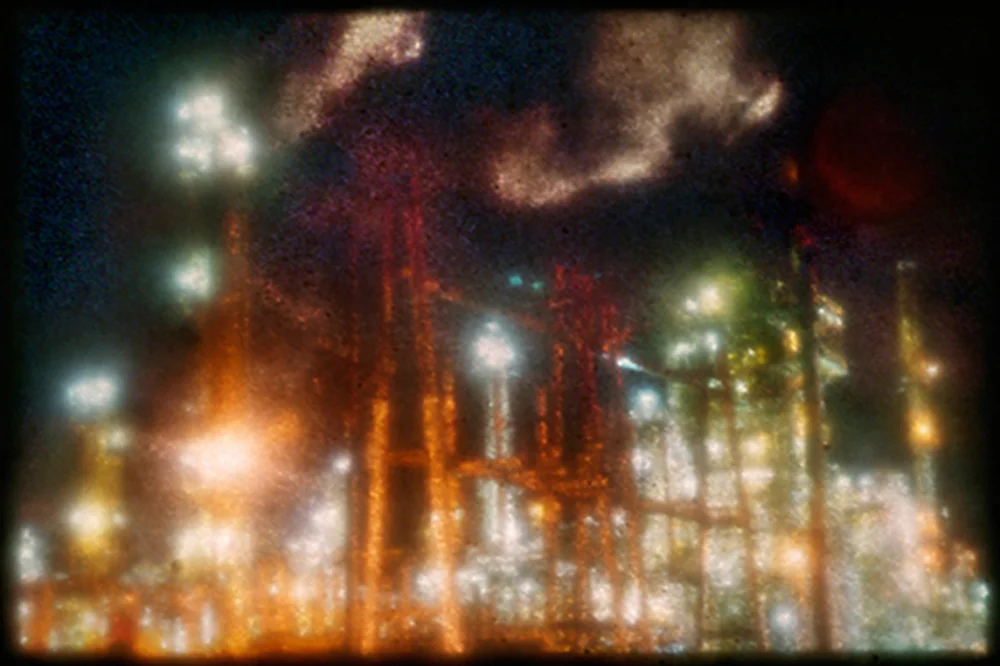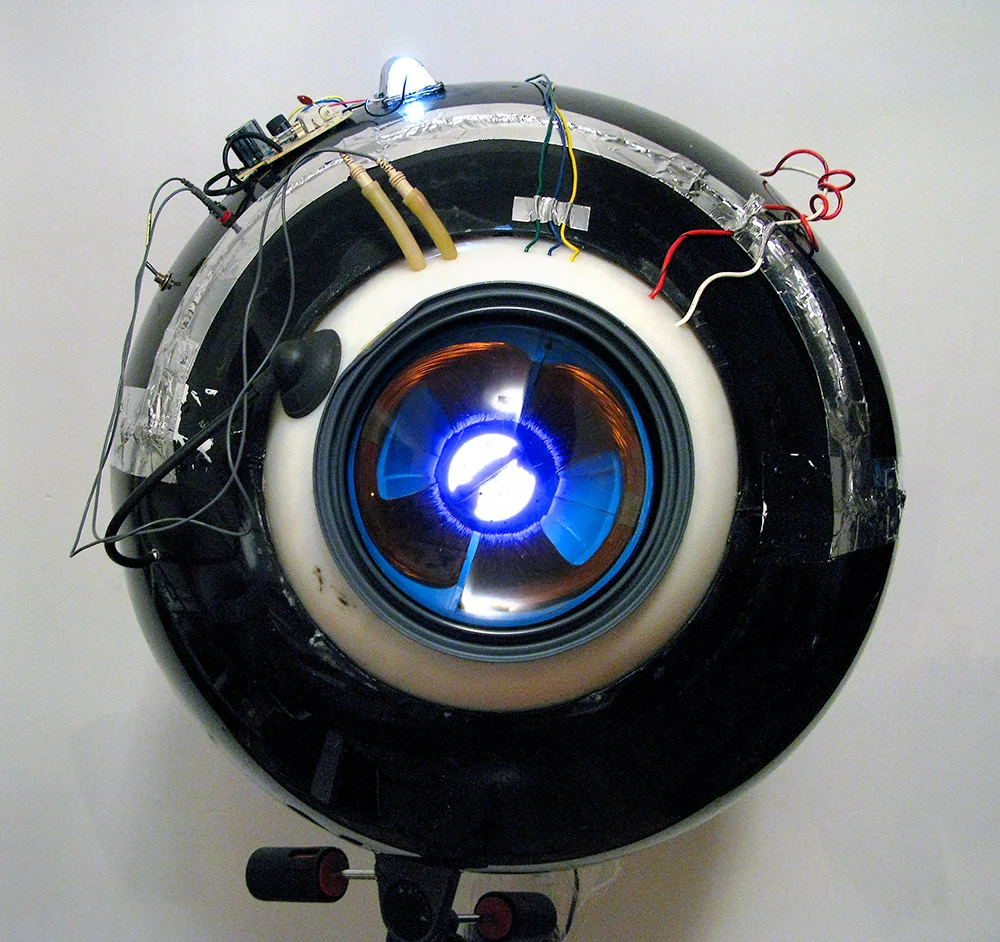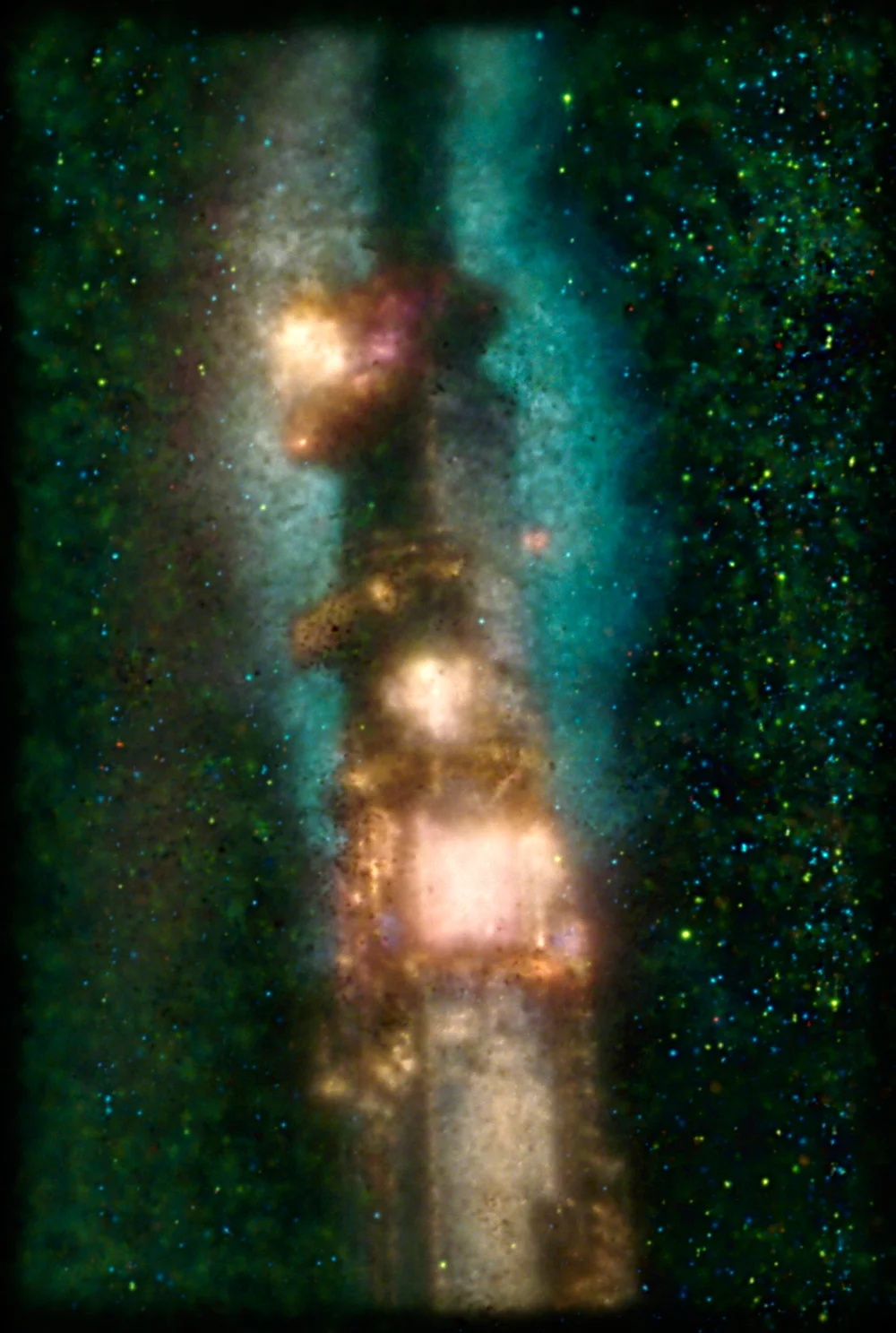Afterimages commonly appear when the human eye comes in contact with something it’s not supposed to, like bright light, a pinprick, or another repelling force. In her series Slow Light, photographer AnnieLaurie Erickson uses long exposures of oil refineries in Louisiana captured with handmade cameras to address this phenomenon as a parallel to unapproachable obstacles in contemporary society and industry.
Erickson’s photographs resemble distant forbidden cities – somewhere between an ocean-submerged Atlantis, and the Wizard of Oz’ Emerald City, but laden with dark polluted clouds. Shot from a distance along the Mississippi River at night, their details are obscured by dim light; their colors muddied into grainy, decaying forms. These strange color shifts are caused by various versions of Erickson’s handmade after-imaging camera in an attempt to replicate the after images that occur naturally to the human eye.
She combines a large format camera body, with hand constructed “retinas” and sheets of 4x5 film. This is a simpler version, which evolved from a completely handmade "beast" into her current 4x5 hybrid. She uses various combinations of Strontium Alluminate, a photo luminescent chemical, to produce strange and arbitrary renderings of color and light. “The biggest challenge when I set out to do this,” she writes, “was to find a material that retained light information and released it over time. I started experimenting with embedding strontium aluminate into different types of polymers. For every attempt at an image there is an initial exposure onto an “artificial retina” (as opposed to a live or biological retina) and then a secondary exposure of the retina onto a piece of film.”
Erickson’s attempts to replicate the complexity of retinal process parallel the difficulties she experiences when trying to photograph locations that are literally off limits. For alleged security reasons, many of Louisiana’s oil refineries have become illegal to photograph since 9-11, which has placed her in difficult situations with law enforcement. “I’ve spent a lot of time in the back of cop cars and supposedly the FBI has a file on me (or so a cop has told me).” These un-photographable subjects and situations, in their mix of grain, discoloration and distortion, mimic the after-images one sees after experiencing visual trauma. “The paradox of afterimages,” writes Erickson, “is that they allow these hard-to-see subjects to be transformed into delicate structures made from soft blobs of light.“
Erickson's work ultimately aims to remind the viewer of the subjective and extraordinary nature of seeing. As vision is a complicated and layered phenomena, its rendering of color, shape and texture are often fragmented across large parts of the brain. “The grainy unfamiliarity of the images I can produce,” writes Erickson, “serve as a reminder of the invisible underpinnings of the familiar act of sight.”
Bio: AnnieLaurie Erickson is a lens-based artist living in New Orleans. Her work has been shown nationally and internationally. Erickson received her BFA from the Rhode Island School of Design and her MFA from the School of the Art Institute of Chicago. She is the head of Photography at Tulane University.








